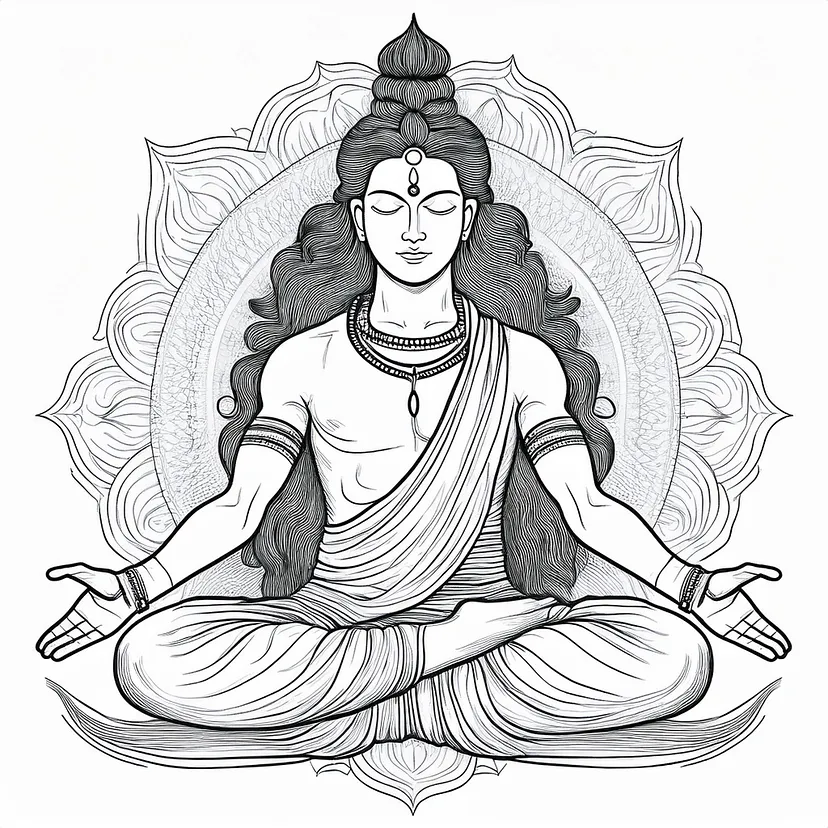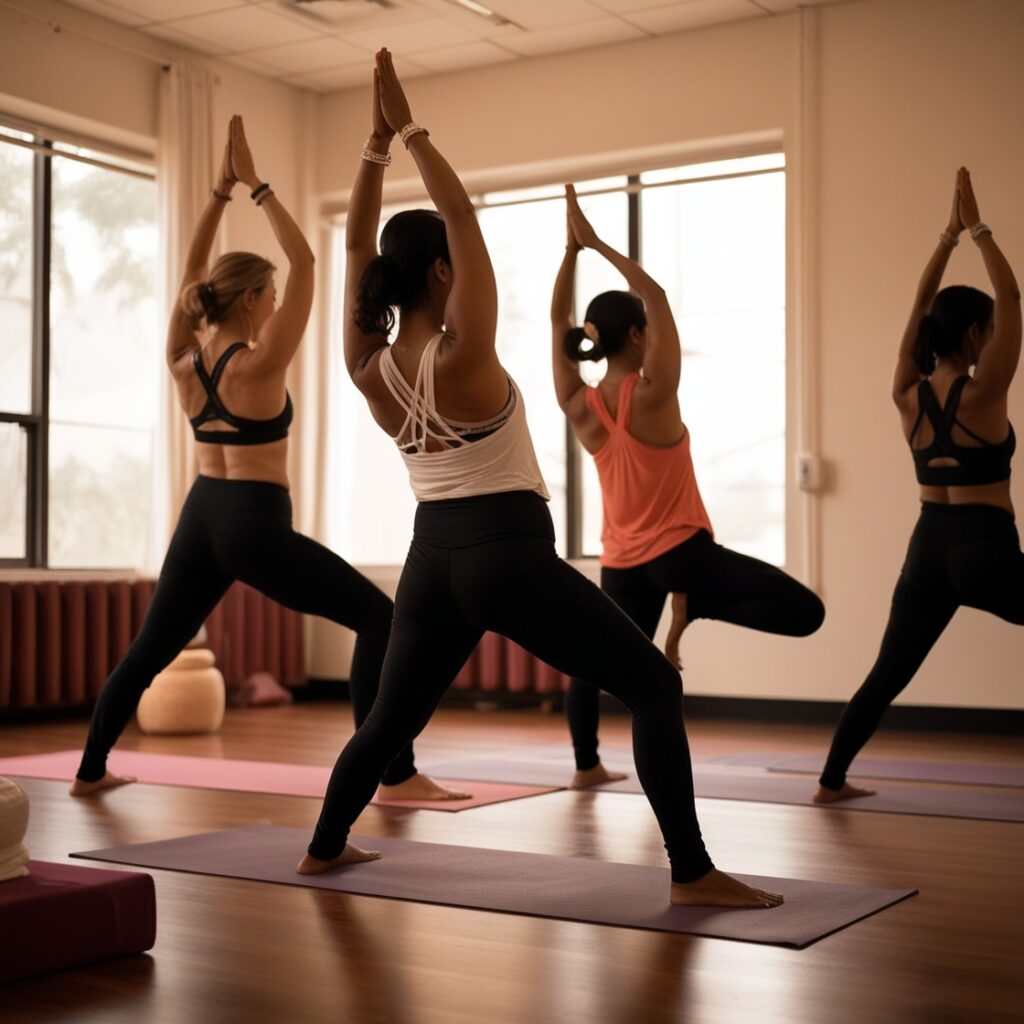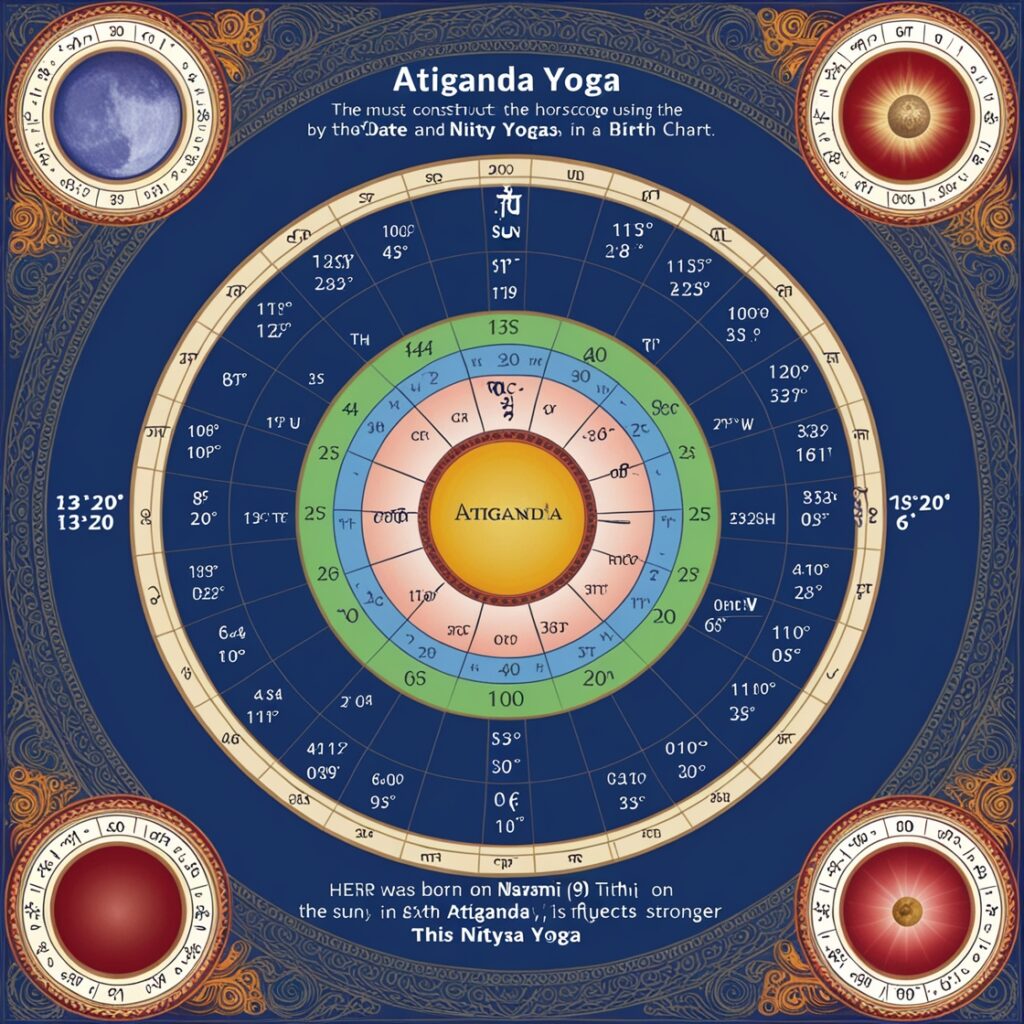IS HATHA YOGA BETTER THAN HOT YOGA?
- Introduction:
Before starting Hatha Yoga, we should know about the concept, meaning, and purpose of Yoga. From various ancient scriptures and tales from various Yogis, it is learned that Yoga is the unification of body, mind, and soul. Even in the Bhagwat Geeta, Lord Krishna advised his disciple Arjuna;
“tapasvibhyodhiko yogi
jnanibhyopi mato dhikaha
karmibhyashchadhiko yogi
tasmad yogi bhavarjuna”
Why Lord Krishna is advising his disciple to be a Yogi? If we analyze the above verse, we can come to a conclusion that the Yogi is superior to those who perform austerity, knowledge, and any action. Therefore, Lord Krishna advised us through his disciple Arjuna “Tasmad Yogi Vhavarjuna”. This means you become a Yogi.

1.1 Purpose:
The main purpose of Yoga is the unification of Mind, Body, and soul. This process allows the Yogis or the practitioners to enter into a deep state of freedom, peace, and self-realization.
1.2 What is Hatha Yoga:
Now let us come to our discussion on Hatha Yoga. When we analyze Hatha Yoga is comprised of two words, one is ‘HA’ and ‘THA’. HA represents Prana (Lifeforce) and THA represents the mind (the conscious energy). If we combine these two, we get – the combination of Lifeforce with the force of Consciousness. When these two combine, the human gets a higher consciousness.
According to Shiva Samhita, Chapter V – Verse 9, it is stated that there are four types of Yoga. First- Mantra Yoga, Second –Hatha Yoga, Third- Laya Yoga, and Fourth – Raja Yoga. It is also stated that Hatha Yoga cannot be performed without Raja Yoga, similarly, Raja Yoga can also not be performed without Hatha Yoga. In defining Hatha Yoga, we can say that it is the science of Yoga which can purify the whole physical body by performing Shatkarma, Asana, Pranayama, Mudra, Bandha, and Concentration as a beginning to Raja Yoga and Samadhi. Therefore, Hatha Yoga is the first step to reach Moksha (Salvation or Nirvana).
1.3 What is Hot Yoga:
While discussing Hot Yoga, it is pertinent to mention here that we don’t get any reference from any Upanishad, The Bhagwat Geeta, Shiva Samhita, Gheranda Samhita, etc. Perhaps, with the evolution and modernization of various Yoga Postures, the modern Yoga Gurus developed various types of Yoga Posture combining scientific apparatus to get quick results both for the practitioner and Yoga Gurus.
Vikram Choudhury, a renowned Yoga Guru in Western countries, developed Hot Yoga. He experimented with some Yoga Postures of Hatha Yoga in a heated studio (105 degrees Fahrenheit with a humidity level of 40%). This approach aims to enhance flexibility and detoxification through sweating and cardiovascular health. This Yoga has 26 Yoga Postures and two breathing exercises in a routine order in every class and it takes generally 90 minutes duration.
During my search on the new yoga poses developed by Vikram Choudhary, I noticed that all these 26 yoga poses are adopted from Hatha Yoga. Moreover, if a practitioner performs Maha Mudra of 10 sets continuously, automatically heat will be generated and the practitioner will start profuse sweating without any artificial heat that’s why it is called Bhoota Shuddhi, which means body cleansing. In Kriya Yoga (a combination of Hatha Yoga and Raja Yoga), every Yoga Guru in India and perhaps in the Western World teaches Maha Mudra as a first step for cleansing the body. But Hot Yoga introduced by Vikram Chowdhary does not include the postures of Maha Mudra.

2. Key Differences between Hatha Yoga and Hot Yoga:
Both Hatha Yoga and Hot Yoga provide some basic differences but they are quite different in their practice.
Some key differences are summarized below:
2.1 Historical Difference
2.1 Hatha Yoga: Hatha Yoga is a traditional form of Yoga that can be traced back more than 5000 years. But Patanjali’s Yoga Sutra came to light approximately 2423 years ago. According to David Gordon White who pointed out that the text fell into ingloriousness late in the 19th Century owing to the efforts of Swami Vivekananda and the Theosophical Society, this has come to prominence throughout the world as a Classic. In addition to Patanjali Yoga, we get references to Hatha Yoga from the Gita, Shiva Samhita, Gheranda Samhita, etc. in various chapters.
Hatha Yoga focuses on Yama, Niyama, Asana, Pranayama, Pratyahara, Dhyan, Dharana and Samadhi. It is considered as the foundation of many Yoga styles which emphasize balance, flexibility, and mindfulness. The benefits of Hatha Yoga are multifarious starting from your foot nail to hair tips. To avail of the benefits, there are various types of Asanas, Pranayama, and Meditation under the proper guidance of a Certified Yoga Teacher, otherwise, the practitioners have to face some unwanted results or no results.
2.2 Hot Yoga: Keeping in view the busy schedule of individuals in their everyday lives, some Yoga Gurus molded the Hatha Yoga postures combining yoga instruments and artificial variable temperatures to achieve quick results. Hot Yoga is performed in a heated room with a varying temperature between 90-to-105 degrees Fahrenheit which helps the practitioners to improve flexibility, detoxify the body, and increase stamina by making the practitioners sweat profusely during Hot Yoga practice. This has been widely accepted in some Western Countries, may be knowingly or unknowingly the efficacies of Hot Yoga. We can’t apply the term Yoga in this case. We know that Yoga is the unification of Body, Mind, and Soul. We do not see in this instant case the unification of above mentioned three elements, only two elements are observed, i.e. Body and Mind. Therefore, we can’t term this as Hot Yoga. Simply this can be termed as Physical exercise in a Heated Room/place.
-
Difference of Intensity in Hatha Yoga and Hot Yoga:
3.1 Hatha Yoga: While comparing the Intensity of Hatha Yoga and Hot Yoga, both these two provide some benefits, but in practical terms, they differ significantly due to their approach, environment, and physical demand. Now, let us discuss the differences with regard to Intensity.
3.1.2 In relation to the intensity of Hatha Yoga, it is a gentle approach focusing on basic postures and the initial Pranayama technique. This can be practiced both by beginners and advanced practitioners, but with the proper guidance of a certified Yoga Guru according to the suitability of their physical tolerance. The pace is generally moderate and provides enough time to focus on flexibility, alignment, and mindfulness. The intensity features are:
3.1.3 Pace: Slow to moderate with enough time to practice the posture.
3.1.4 Physical demand: Lower intensity, pointing on stretches, balance, and deep breathing.
3.1.5 Sweat factor: Since Hatha Yoga focuses on mindfulness, the sweat factor is not so important but with the increase in practice intensity of sweating starts automatically.
3.1.6 Heart Rate: Heart rate is generally normal but sometimes on rare occasions it rises.
3.2 Hot Yoga Intensity: Hot Yoga is performed in a heated room; the temperature of the room remains within 35 to 40 degrees centigrade. The heat intensifies the exercise and leads to a more intense workout. The intensity of Hot Yoga depends on the following features:
3.2.1 Pace: The pace of Hot Yoga involves a series of practices within a heated room where the temperature of the room remains 35 to 45 degrees centigrade. The classes of Hot yoga generally follow the postures of Vinyasa Yoga combined with the breathing technique. Here, the pace may vary according to the instruction of the Yoga Instructor.
3.2.2 Physical Demand: Physical demand in Hot Yoga is combined with high temperature and challenging poses that increase flexibility, strength, and endurance. The warm temperature loosens the muscles, reduces the potential risk of injury, and allows for a deeper stretch. The practitioners sweat profusely for detoxification but in this case, proper hydration is required.
3.3.3 Sweat Factor: The sweat factor of Hot Yoga is referred to as Vikram Yoga. The classes are conducted in a heated room with high humidity. This high humidity enhances sweating and thereby helps detoxification and flexibility. During this period, the practitioners need to be hydrated.
3.3.4 Heart Rate: The heart rate during practice varies significantly between 120 to 160 beats per minute depending upon the individual and the intensity of practice. It is essential to be hydrated during practice and listen to your body. It is important to mention here that practitioners should consult a healthcare professional for personalized advice.
-
Benefits and Potential Dangers in Hatha Yoga and Hot Yoga:
4.1 Hatha Yoga benefits: The benefits of Hatha Yoga are innumerable starting from weight loss to cure various chronic and sometimes incurable diseases. It helps to promote respiratory function and blood circulation properly. Regular practice helps to a deeper connection between body, mind, and soul. Hatha Yoga helps to create a balance between the body, mind, and energy. When this balance is created, the impulses are generated and give a call of awakening to the central force for the evolution of consciousness. If this consciousness is not generated, the true purpose and benefit of Hatha Yoga are lost.
4.2 Potential Dangers: Hatha Yoga is generally considered risk-free provided the postures are practiced correctly. Understanding these risks helps the practitioners to avoid injury and ensure a safe yoga practice. The potential dangers are:
- Muscle Strain
- Joint damage
- Ligament damage
- Muscle tears
- Dizziness
- Increased anxiety
- Emotional overload
- Electrolyte imbalance
All these can be avoided if practiced properly and under the guidance of a Certified Yoga Teacher.
4.3 Hot Yoga benefits: In comparison to Hatha Yoga, hot yoga provides less benefits. Regardless of room temperature, hot yoga extends relaxation in the mind and improves physical fitness. In spite of relaxation in mind and improvement fitness it also helps to:
- Improve flexibility,
- Helps to burn calories,
- Increases bone density,
- Reduces stress,
- Ease depression,
- Boosts cardiovascular health,
- Reduces blood sugar level, and
- Nourishes the Skin
4.4 Potential Dangers: Hot Yoga may be a great workout for many people especially those who cannot provide a longer time like Hatha Yoga practitioners, but it is not risk-free. Practice in a heated room (temperature ranging from 90 to 105 degrees Fahrenheit) may lead to dehydration owing to profuse sweating, dizziness, nausea, and headache. The other problems are as under:
- Dehydration
- Muscle strain due to overstretching
- Heat exhaustion
- Heat Stroke
- Heart problem
- Skin irritation
- Heat rash
- Risk for pregnant women, etc.
In this case, also, the above dangers can also be avoided if the practice is proper and under the guidance of a certified Yoga Teacher.
-
Analysis:
While choosing between Hatha Yoga and Hot Yoga, the practitioners should be careful, whether they want restorative practice or a sweaty and challenging session. My personal opinion on both Hatha Yoga and Hot Yoga is summarized below for the convenience of fitness seekers.
Hatha Yoga: It is always preferable to choose a slower-paced practice as the foundation of the course. Start with slower-paced poses, breathing techniques, and mindfulness. Many people prefer Hatha Yoga since it helps to focus on the alignment and balance of body and mind without any added intensity of a heated environment.
Hot Yoga: Hot Yoga is liked by people who cannot spare much time like Hatha Yoga but want to gain quick results. It is a more intense practice in a heated room to enhance flexibility and detoxify the body through profuse sweating. The heat makes the muscles more flexible. It requires adequate hydration.
Keeping in view the pros and cons, it is advisable to opt for Hatha Yoga since it is tested and well-acclaimed throughout the world.
-
Conclusion:
While drawing conclusion, it is worthwhile to mention that both Hatha Yoga and Hot Yoga have their unique benefits depending on the fitness goals and personal preferences. Hatha Yoga is ideal for those who opt for a gentle and mindful practice that helps to provide flexibility, balance, and mental clarity. It is ideal for beginners and those who want to make a solid foundation in Yoga. Hot Yoga is also great for people who want intense practice, quick results, and detoxifying the body through excessive sweating to improve their flexibility and endurance.
Now it is up to the yoga seekers to determine which will be preferable to them, whether a gentle and mindful Hatha Yoga or a heated intensity of Hot Yoga. Whatever may be your choice, but start today to experience the difference.
FAQ:
Question : 1 – What is the main difference between Hatha yoga and Hot yoga?
Ans: The differences between Hatha Yoga and Hot Yoga lie in intensity and temperature. Hatha Yoga’s central point is basic poses, breathing techniques, and mindfulness in a natural environment making it a slower and relaxed practice whereas the Hot Yoga’s central point is to perform the Yoga in a heated room where performers sweat more allowing for deeper stretching and intense workout.
Question : 2 – Which is better for beginners, Hatha Yoga or Hot Yoga?
Ans : Hatha Yoga is unanimously accepted throughout the world and it is always advisable for beginners since it is slower pace and always puts emphasis on foundational poses whereas Hot Yoga can be more physically demanding and may attract beginners with intense flow and high heat.
Question No: 3 – Which is better for weight loss, whether Hatha Yoga or Hot Yoga?
Ans: Hatha Yoga is always a better option. Hatha has various poses for weight loss but it takes time and it is sustainable. Since people always want better results with less time, Hot Yoga is suitable for them. Hot Yoga has some adverse effects also.
Question No: 4 – Which yoga style is more physically challenging, Hatha or Hot yoga.
Ans: Hot Yoga is generally more physically challenging since workouts are more heat-intensified for deeper stretching and more strenuous practice. It is important to be hydrated. But in Hatha Yoga is a slower process and focuses on controlled movement and postures. It is less intense but beneficial for strength and flexibility.
Question No. 5 : Is Hot Yoga more dangerous than Hatha Yoga.
Ans : Yes, Hot Yoga is more dangerous than Hatha Yoga. Hot Yoga is riskier for people who are sensitive to heat or have pre-existing health issues. The high temperature can lead to dehydration, overheating or heat exhaustion. Whereas Hatha Yoga is always safer than Hot Yoga for all ages and fitness levels and it does not involve extreme heat.






